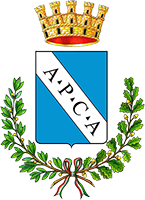TO ST. MICHAEL

TO ST. MICHAEL
The church consecrated to St. Michael and the great monastery complex, which were built above the Medieval Walls, were founded during the 16th century. The complex originally belonged to the Jesuits, but in 1601 the Bishop of Amelia Antonio Maria Graziani, invited the Order of the Regular Clerics, known as Somaschi Fathers, to the city and he gave them the complex. As the Clerics were admired by the city inhabitants, they enjoyed the patronage of important local families, such as the Boccarini and the Petrignani, and in 1620 they established here a seminary.
After the Napoleonic occupation, the Somaschi Fathers left Amelia and the church was deconsecrated. The complex became a council property after the Monastic Orders’ abolition law, that was approved by the Kingdom of Italy in 1867. It has been recently restored and it now houses the “Ameria Umbria” Music School’s students, and the church is used as an Auditorium and a conference space. The facade is very interesting: entirely constituted by bricks with a travertine framing, it has a bell tower to both sides. The one on the right still preserves a clock, known as “alla romana”, that only marks six hours. It also has a computerised mechanism that allows a bell to play each stroke of the hour.
The internal part of the church, even if without any painted works, still conserves some Baroque decor, among which the choir, that is situated at the opposite side of the façade, and the altar, a polychrome wooded structure. During the last restoration, some frescoed lunettes re-emerged inside the convent courtyard and in adjacent rooms, representing Life’s Scenes of Saints, attributed by the ancient sources to Cavalier d’Arpino. The ex-seminary dormitories conserve two big frescoes, depicting The Archangel Gabriel announcing to Mary and The Archangel Michael weighing the souls and pushing the dragon. The documents in the archives assign them to the painter Tarquinio Racani, whose works are scattered inside Amelia’s buildings and churches (cross reference to panel nr. 6 “Palazzo Venturelli”).


